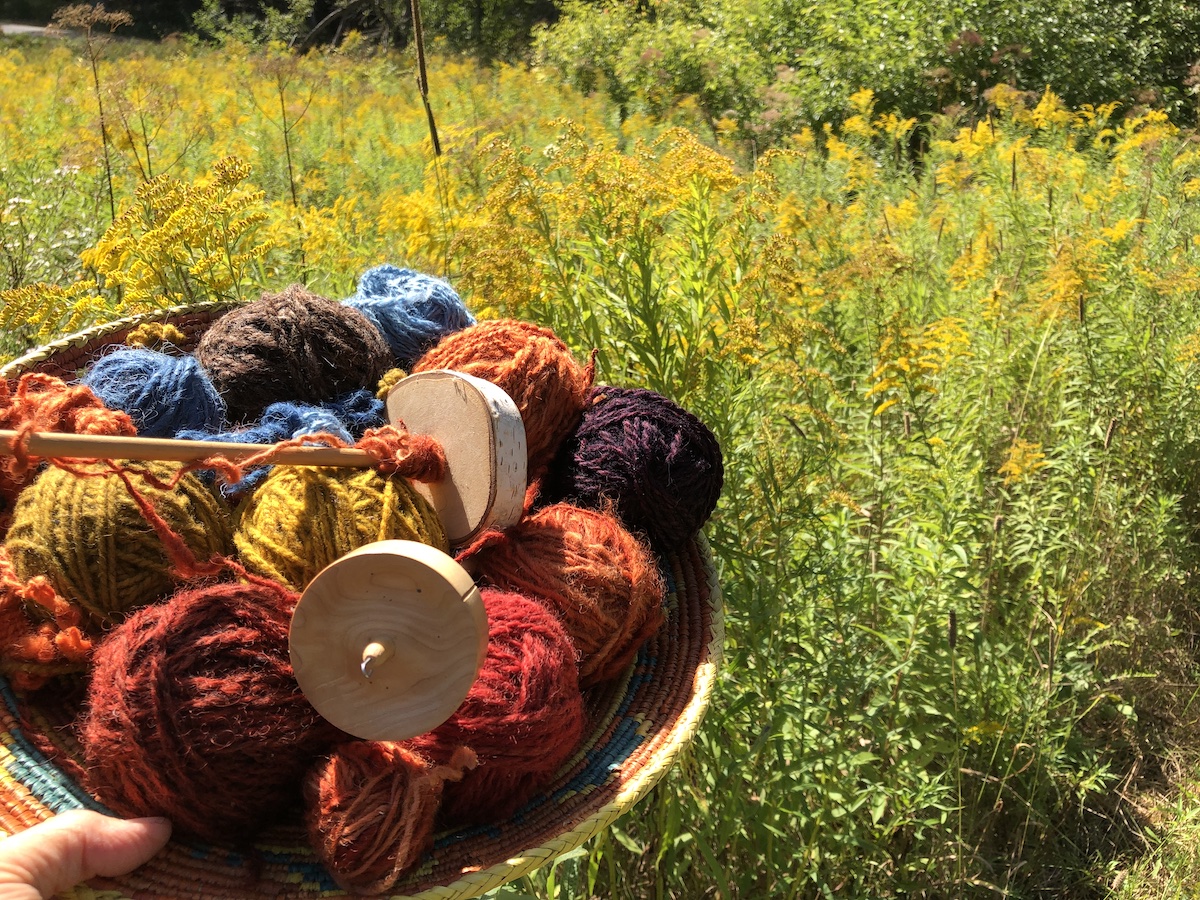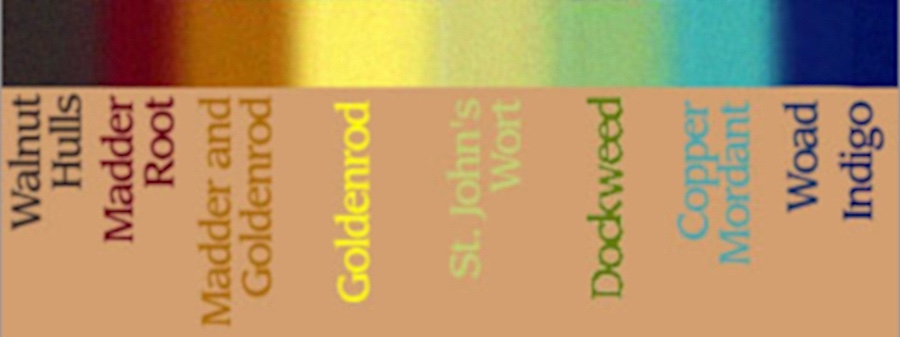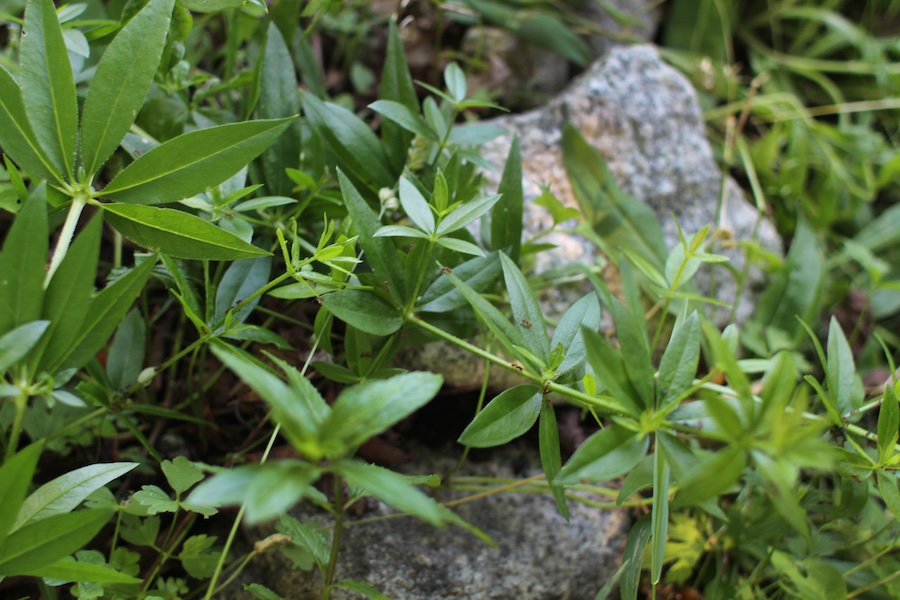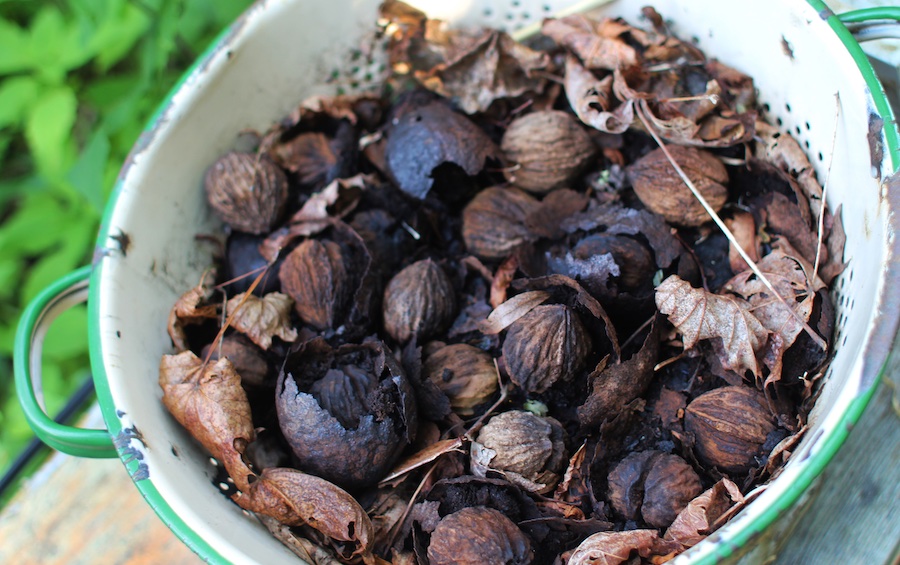Materials and Methods
My work begins on a Maine island
Every June, a flotilla of boats carrying sheep shearers, fiber folks and helpers heads to a group of low islands off the coast of Downeast Maine to shear the flocks of sheep that have lived on the islands for over 100 years. The sheep are for the most part a cross of two breeds: Lincoln and Romney. Their wool is long, soft and very clean, due to the moor-like landscape of the islands, with few shrubs. The wool is also lustrous and healthy because the sheep eat lots of seaweed that is exposed at low tide.
I help to grade and roll the fleeces for transport to the mainland. My fleeces come from these excursions. After the wool is bagged and loaded in the boats, we set off for the return journey and home.
Pictured are the corral with shearers and helpers, and in the foreground are rolled fleeces. Below is the view from a boat returning from the island, towing a dory, with a motorboat carrying the generator following.
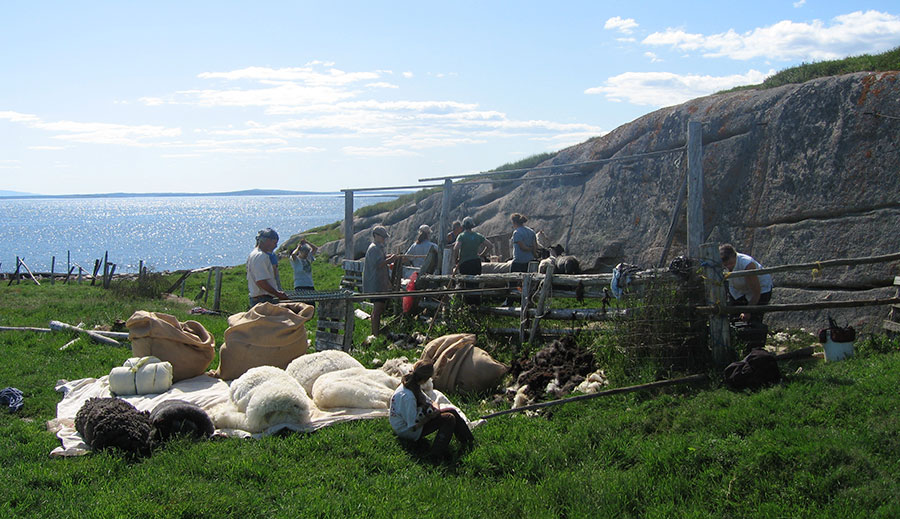
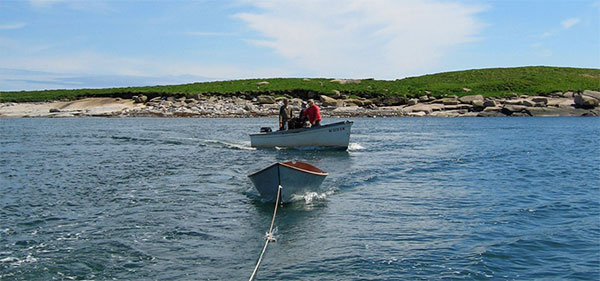
Spinning and Preparing Wool
I begin to create my work by spinning directly from a clean but unwashed fleece, called "spinning in the grease" because the lanolin hasn't been washed out. Island fleeces are the only ones that can be worked this way. They are natural clean because of the island environment, and their fleeces require little preparation. I like long-staple, coarser wool, which most spinners, knitters and wool processors avoid. My yarn is coarser and tougher than knitting yarn, because I use it to weave three-dimensional faces, and this process requires a yarn that gives some structure.
Once the yarn is spun, I place two balls of yarn in two bowls next to me, and use the spinning wheel to twist them into two-ply yarn, which is nice and sturdy so that three-dimensional faces keep their shape. Next, I wind the yarn into skeins for dyeing. Now I wash the skeins thoroughly to remove all the lanolin.
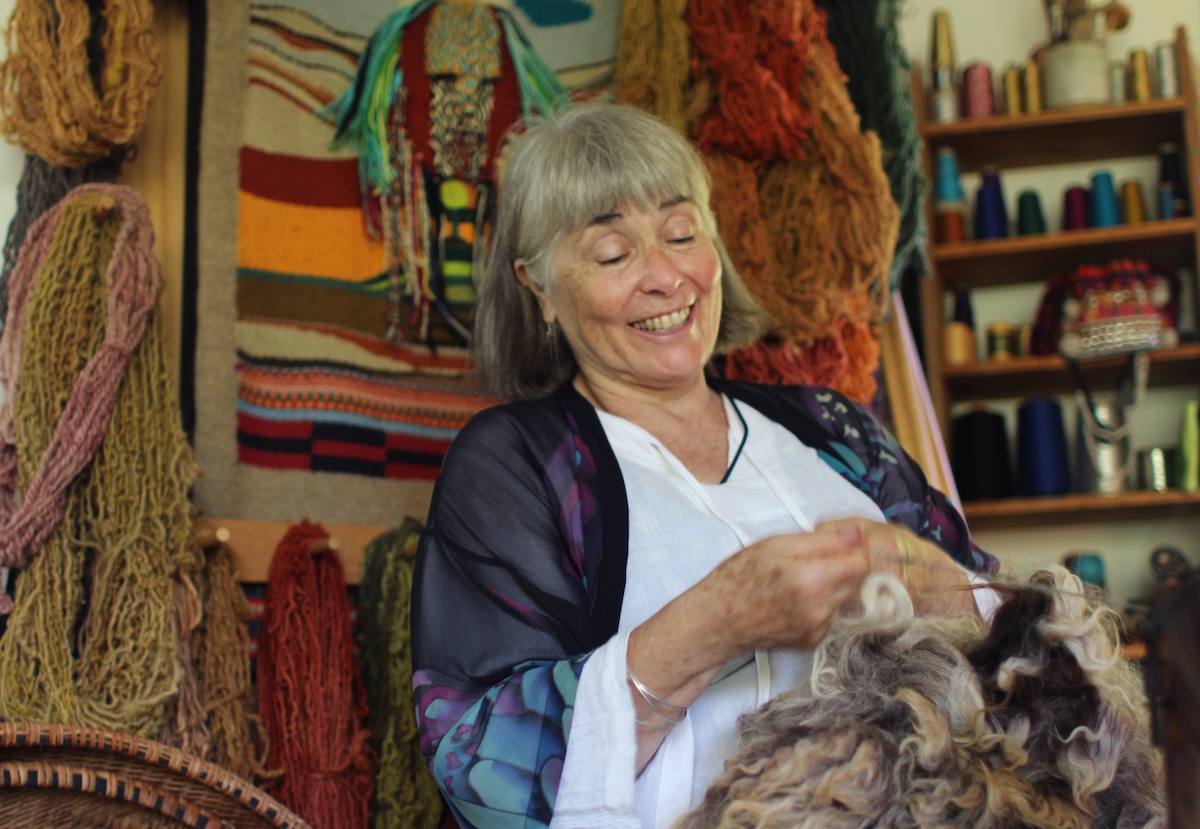
Dyeing with Plants
I like to use wild plants, lichen that has fallen from trees, and plants I can grow in my garden. Walnut hulls give a beautiful dark brown (artists would call it burnt umber). Blues can be from three sources. My favorite is wild indigo, or Japanese indigo (Periscaria tinctoria), which grows in Maine. It is not invasive, and it makes a beautiful range of colors from aqua to cobalt blue. If I want a deep blue, I will break out my indigo powder, which came from India. This is the ultimate blue dye, and has been used for thousands of years. It takes long preparation to create the pigment material, and it was extremely valuable in medieval times. White yarn looks white as it goes into the dye, but when you lift it out into the air, at first is is still white, until the oxygen turns the dye chemistry blue. Repeated dippings and liftings deepen the color. Anatolian (Turkish) and Persian carpets were traditionally dyed with indigo.
The first picture is a basket of yarns I have dyed different colors with plants. The yellows are the sunny yellow of goldenrod (genus Solidago) and weld (Reseda luteola), which makes a vivid electric yellow. The reds and oranges are all madder root (Rubia tinctorum). Marigolds (genus Tagetes) also make a nice warm orange. That's a whole field of goldenrod in the background. Black-eyed susan (Rudbeckia hirta) makes a nice spring green, as does dockweed.
The spectrum image shows a few colors that can be achieved with plant dyes. Some dyes require a "mordant" to prepare the wool to fix the dye, which helps the colors be light-fast and color-fast when washed. To prepare for dyeing with most of my plant dyes (except indigo), I use the same alum that is used to keep pickles crisp. I no longer use copper to mordant yarn, which helps dockweed dye to turn aqua, because of its toxicity. It the past, many dyers used toxic chemicals to mordant yarns, such as chromium and copper. We know more now, and have found more friendly alternatives.
The first small photo shows madder plants, whose roots make my absolute favorite reds. The second picture is a colander of walnut hulls from a neighbor's walnut tree.
